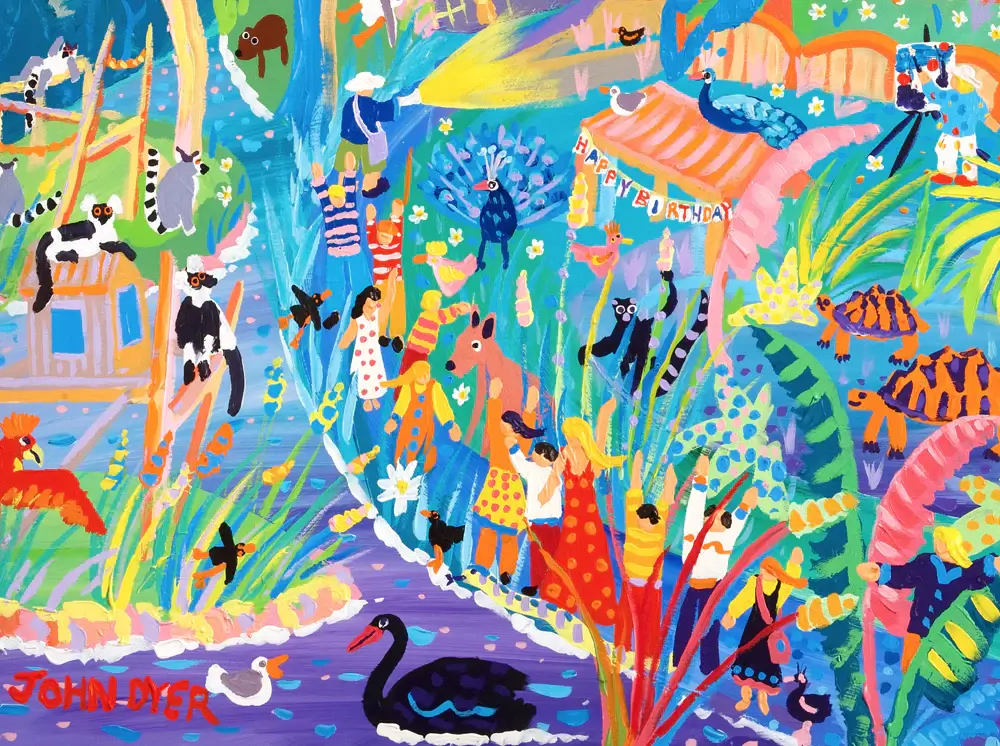Throughout history, animals have been a subject of fascination and inspiration for artists from all walks of life. The natural world, with its diverse creatures and majestic beauty, has served as a rich source of creativity for painters, sculptors, illustrators, and other artists. From ancient cave paintings to contemporary masterpieces, animal-inspired artwork has evolved, reflecting our ever-changing relationship with the animal kingdom. In this article, we will delve into the captivating world of animal-inspired art, exploring its significance, evolution, and impact on art and society.
Section 1: The Historical Roots of Animal Art
1.1 Ancient Depictions of Animals
The origins of animal-inspired art can be traced back to prehistoric times. Ancient cave paintings found in places like Lascaux, France, and Altamira, Spain, dating back thousands of years, feature vivid depictions of animals. These early artworks often served as expressions of reverence for animals as powerful and mysterious beings.
1.2 Animal Symbolism in Ancient Cultures
In ancient civilizations, animals held symbolic significance and were often associated with deities and spiritual beliefs. From the sacred cows of ancient Egypt to the revered dragons of Chinese mythology, animals played a central role in the visual language of various cultures.
1.3 Animal Art in Religious and Mythological Contexts
Religious and mythological narratives frequently featured animals as messengers, guardians, or embodiments of divine qualities. Artists of the Renaissance and Baroque periods, for example, depicted animals in religious scenes to add depth and symbolism to their compositions.
Section 2: The Renaissance and Naturalism
2.1 Renaissance Artists and their Animal Studies
During the Renaissance, a period marked by renewed interest in classical knowledge and a celebration of the natural world, artists began to study animals with a scientific approach. Artists like Leonardo da Vinci and Albrecht Dürer made detailed animal studies, exploring anatomy, movement, and behavior.
2.2 The Rise of Wildlife Art
As exploration and colonization expanded in the 18th and 19th centuries, artists captured the exotic fauna encountered during these journeys. Wildlife art emerged as a distinct genre, showcasing the beauty and diversity of creatures from far-off lands.
2.3 Animalier Sculpture
The 19th century also saw the rise of animalier sculpture, a genre dedicated to sculpting animals with exceptional realism and attention to detail. Artists like Antoine-Louis Barye and Rembrandt Bugatti created masterpieces that captured the essence of the animal kingdom in bronze and marble.
Section 3: Animal Art in Modern and Contemporary Times
3.1 The Art of Scientific Illustration
With the development of scientific knowledge and exploration, animal illustrations became essential for documenting and understanding the natural world. Scientific illustrators, such as John James Audubon and Ernst Haeckel, created intricate and accurate depictions of animals for scientific publications.
3.2 Wildlife Photography and Conservation Art
In the 20th century, wildlife photography became a powerful medium to capture the essence of animals in their natural habitats. Photographers like Ansel Adams and Frans Lanting used their lens to raise awareness about conservation issues and the need to protect the world’s endangered species.
3.3 Animal-Inspired Contemporary Art
In contemporary times, animal-inspired art has taken on diverse and innovative forms. From hyper-realistic paintings to abstract sculptures and digital art, artists continue to explore new ways of representing the animal kingdom in their creations.
Section 4: The Symbolism and Meanings of Animal Art
4.1 Animals as Symbols of Power and Wisdom
Throughout history, certain animals have been regarded as symbols of power, strength, and wisdom. Lions, eagles, and owls, for example, often represent leadership and intelligence in art.
4.2 Animals as Allegories and Metaphors
Artists frequently use animals as allegories and metaphors to convey complex ideas and emotions. A snail might symbolize patience, while a dove may represent peace and purity.
4.3 Animal Art and Human Identity
The portrayal of animals in art can also reflect and question human identity. Artists may explore the human-animal connection, our shared evolutionary past, and the impact of human actions on the animal kingdom.
Section 5: The Influence of Animal Art on Society
5.1 Cultivating Empathy and Conservation
Animal-inspired artwork has the power to evoke empathy and compassion for the animal world. By showcasing the beauty and vulnerability of animals, art can inspire people to become advocates for conservation and animal welfare.
5.2 Celebrating Cultural Diversity
Animal art often reflects the cultural significance of animals in different societies. From the revered elephants in Asian art to the sacred cows in Indian art, animals are woven into the fabric of cultural identity.
5.3 The Debate on Ethical Representation
In contemporary times, the ethical representation of animals in art has become a subject of debate. Some argue that art should not perpetuate harmful stereotypes or exploit animals for entertainment.
Section 6: Animal Art in the Digital Age
6.1 Digital Art and Animation
The digital age has opened up new possibilities for animal-inspired art. Digital artists and animators create vibrant and imaginative animal characters in video games, animated films, and virtual reality experiences.
6.2 Social Media and Animal Art
Social media platforms have become a powerful space for artists to share their animal-inspired artwork with a global audience. Hashtags like #animalart and #wildlifeart connect artists and enthusiasts worldwide.
6.3 Art Activism and Animal Rights
In the digital age, animal-inspired art has been leveraged as a tool for art activism and animal rights advocacy. Artists use their work to raise awareness about issues such as poaching, habitat destruction, and animal cruelty.
Section 7: The Enduring Beauty of Animal Art
7.1 Art as a Celebration of Nature
Animal-inspired artwork celebrates the beauty and wonder of the natural world. It reminds us of our interconnectedness with other species and our responsibility to protect and preserve biodiversity.
7.2 The Timeless Appeal of Animal Art
Animal-inspired art has a timeless appeal that transcends cultural boundaries. Whether in traditional or contemporary forms, the allure of animals in art continues to captivate audiences worldwide.
7.3 The Legacy of Animal-Inspired Artists
The legacy of artists who have immortalized the animal kingdom in their work lives on. From the majestic paintings of the Renaissance to the thought-provoking installations of contemporary artists, animal-inspired art leaves a lasting impact on art history.
Conclusion
Animal-inspired art is a testament to the profound connection between humans and the animal kingdom. From ancient cave paintings to modern digital creations, this genre has evolved and adapted to reflect our changing attitudes towards animals and nature. The art of the zoo not only showcases the beauty of the animal world but also serves as a reminder of our responsibility as stewards of the planet. Through the imagination and creativity of artists, animal-inspired art continues to inspire and foster a deeper appreciation for the natural world and the creatures that inhabit it.


 Business2 years ago
Business2 years ago
 Tips & Tricks2 years ago
Tips & Tricks2 years ago
 Law2 years ago
Law2 years ago
 Technology2 years ago
Technology2 years ago
 Business2 years ago
Business2 years ago
 Business1 year ago
Business1 year ago
 Lifestyle2 years ago
Lifestyle2 years ago
 Technology2 years ago
Technology2 years ago






